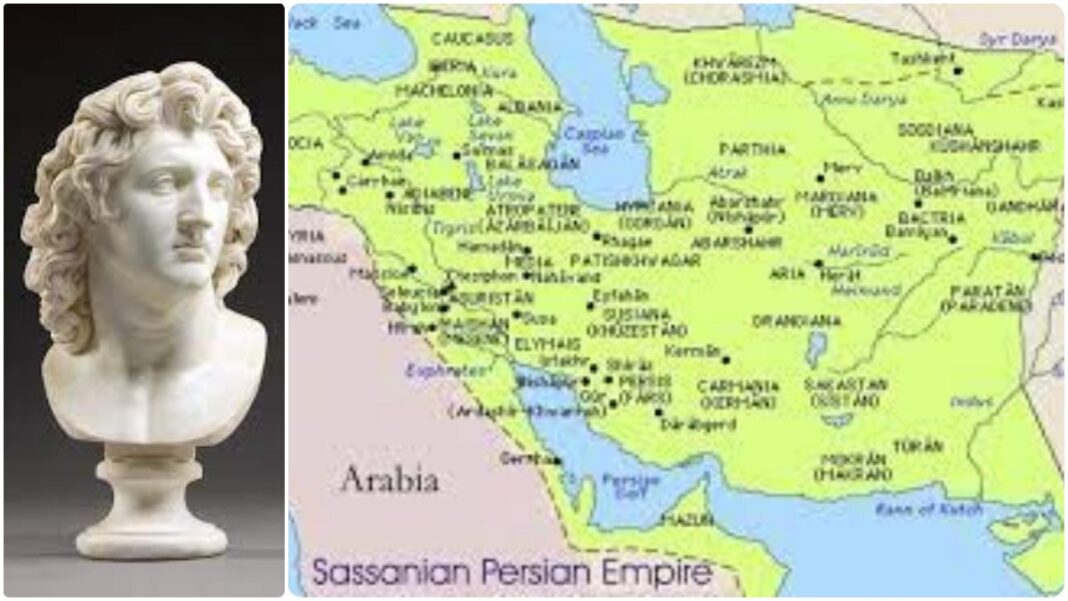By 500 BCE, many local loyalties had been undermined by the state-sponsored resettlements of the Assyrians and Babylonians, and the inhabitants of the Middle East were accustomed to living in huge multinational states under imperial regimes. One common language, Aramaic, covered the region, and with it, the Aramaic alphabetical script. The Middle Eastern trade communications were further strengthened by the empire-spanning Persian road network.
By 500 BCE the Middle East had become the first region to be acquainted with a new development in religion, monotheism. The Israelites had focussed their worship on the One God, Yahweh or Yehowah, which, paradoxically, had been strengthened by a period of exile in Babylon for many of the religious elite. The Persians had developed their own monotheistic faith in Zoroastrianism (perhaps more accurately Zoroastrianism should be described as a dualistic faith, as it holds that two gods, one good and one evil, battle for control of the cosmos, though good is assured of ultimate victory). What connection, if any, there was between the origin and early development of the two religions is unknown, although modern scholars often see a strong Zoroastrian influence on later Judaism.
For two centuries after 500 BCE, the Persian empire ruled almost the entire Middle East. Then, in a few years after 334 BCE, the conquests of Alexander the Great transformed the region.
The Persian empire brought an unprecedented degree of peace, stability and prosperity in the century and a half after 500 BCE. As the 4th century drew on, however, its political stability began to weaken and revolts began to rock the empire. Greek mercenaries played a major part in these episodes, and were highly valued for their fighting qualities.
After uniting the Greek city-states under his leadership, Alexander, king of Macedon, invaded Persian-held Asia Minor in 334 BCE. Over the next ten years he completely conquered the huge Persian empire, and even invaded India.
After Alexander’s untimely death in 323 BCE, his empire immediately began to fall apart as his generals fought each other for supremacy. By 300 BCE, the empire had broken into three main pieces, each under a family of one of Alexander’s generals: Macedonia in Greece and the Balkans, under the Antigonids; a vast territory stretching from Asia Minor to India, under the Seleucids; and Egypt, under the Ptolemies. Other ruling families controlled smaller territories.
Despite a short time in which Alexander the Great’s conquests occurred, and the swiftness with which they were divided up among his successors, they transformed the Middle East for centuries to come. They imposed a new and alien culture on the region, the first time in history this had been done on such an extensive scale. This culture was basically Greek, as Alexander and his successors founded numerous Greek-style cities, right across the Middle East as far as Afghanistan and India. These cities were populated by Greeks and Macedonian settlers, and became centres for the spread of Greek civilization. Greek cultural influences were felt far beyond the political frontiers of Hellenism: the statue of a southern Arabian king is depicted in Greek clothes, and Greek styles had a profound influence on Indian art and architecture.
Modern scholars distinguish this phase of Greek civilization from the earlier, Classical age, by labelling it the Hellenistic period. Advances in the arts and sciences, begun by the Greeks centuries earlier, continued apace, but it was also a period when Greek culture experienced some degree of hybridization with local traditions in the Middle East. The styles of art and thought of the ancient Egyptians and Babylonians exercised a significant influence on the Greeks, while at the same time non-Greek peoples, if not completely absorbed into Hellenistic culture, were profoundly influenced by it. For example, the Jews, who by this time were to be found in all the major cities of the Middle East as well as in their Judaean homeland, translated their scriptures into Greek at this time, and Greek ideas became embedded in the Jewish faith.
In the east, the Parthians, a people closely related to the Persians, rapidly conquered a large empire, seizing Iran and Iraq from the Seleucid kings. In the west, the rising power of Rome gradually expanded into Greece and the Balkans, and then into Asia Minor, Syria, Palestine and eventually Egypt. Having swallowed up all the Hellenistic kingdoms of the eastern Mediterranean, Roman power faced the Parthians directly. An attempt by the Romans to conquer onwards into Parthia met with disaster at the Battle of Carrhae, in 54 BCE.
The resulting division of the Middle East between the Roman and Parthian empires set the pattern for the political map of the region which was to persist until the coming of Islam, more than six hundred years later.
In China, the period of Qin Dynasty, whilst much shorter than that of any other of the major dynasties in Ancient China, forms a crucial phase in the development of Chinese civilization. It saw the first unification of China under the rule of a single emperor, and thus opened the curtain on China’s long imperial history. This was an important moment in World History.
Qin was one of the leading states in the Warring States period of Ancient China. Its origins can be traced back to the beginnings of the Eastern Zhou, to 771 BCE. At that date one of the great catastrophes of Chinese history had just occurred when the Western Zhou capital was sacked by a coalition of barbarian invaders, and Chinese rebels.
In the aftermath, a vassal lord loyal to the Zhou drove the barbarians back beyond the frontiers. In gratitude, the new Zhou king gave him lands around the old capital as a fief. He was also given a promise that he and his successors could keep any other lands that they were able to take from the barbarians.
By Ramanie de Zoysa – Gold Coast, Australia








